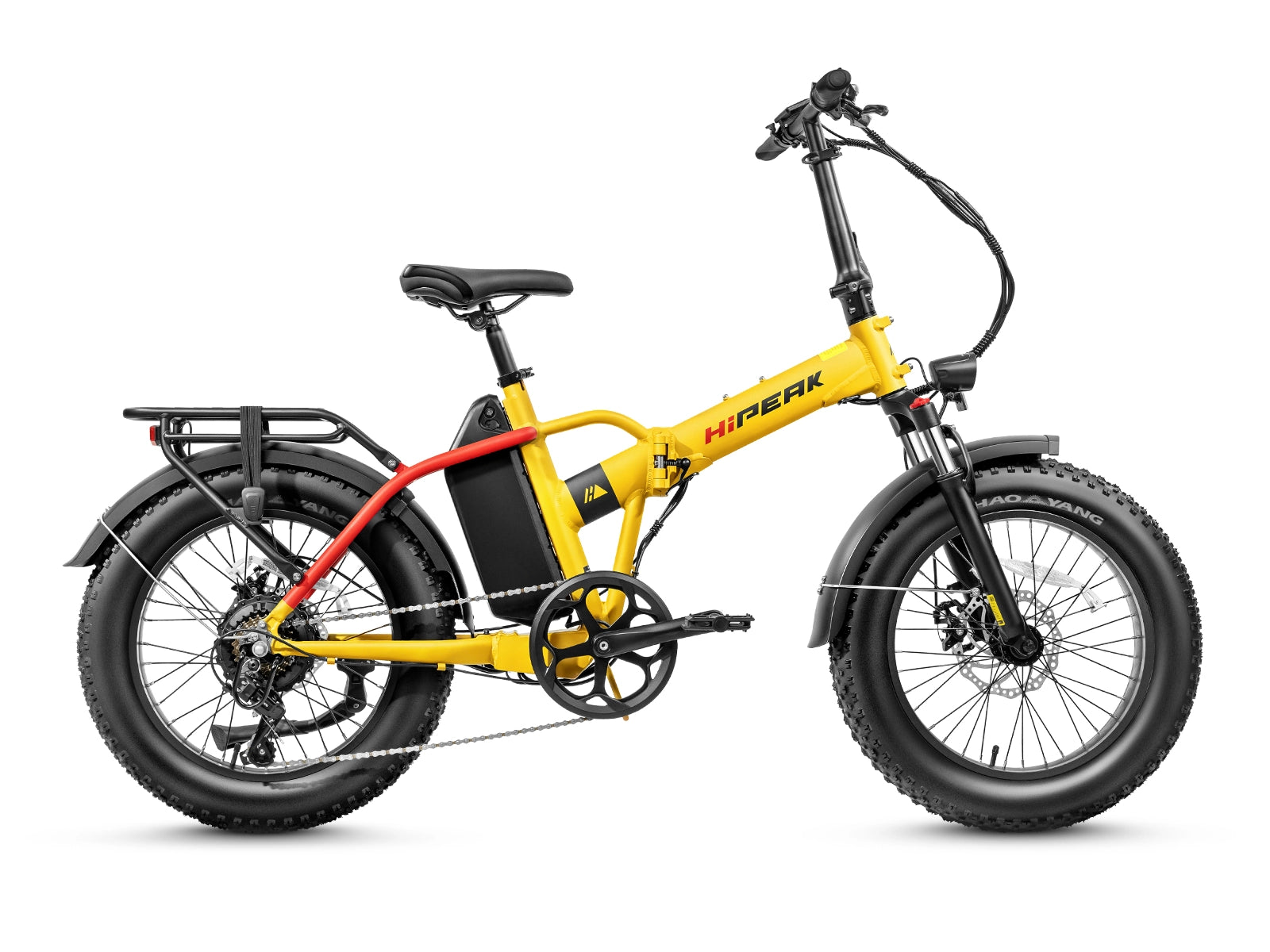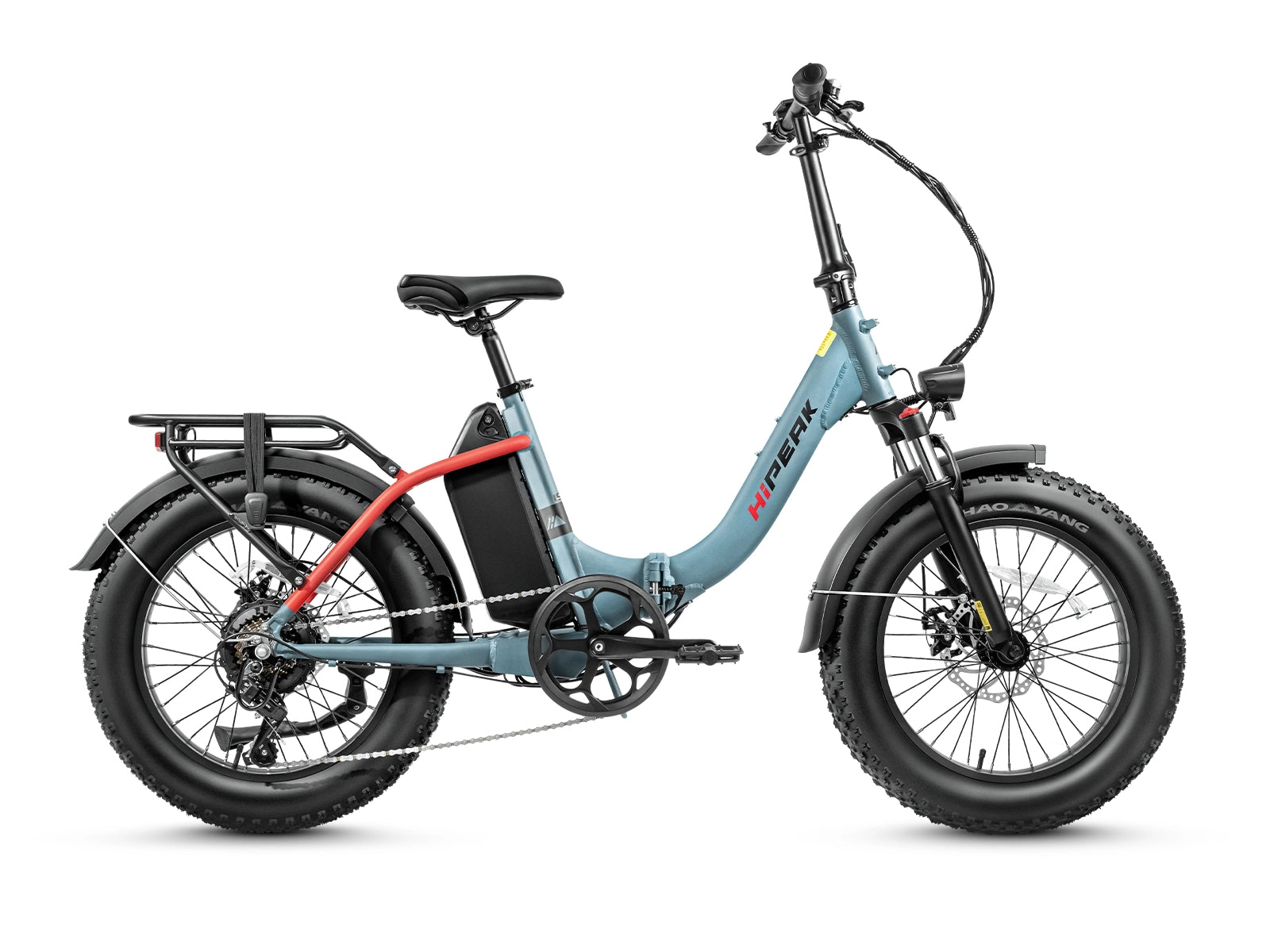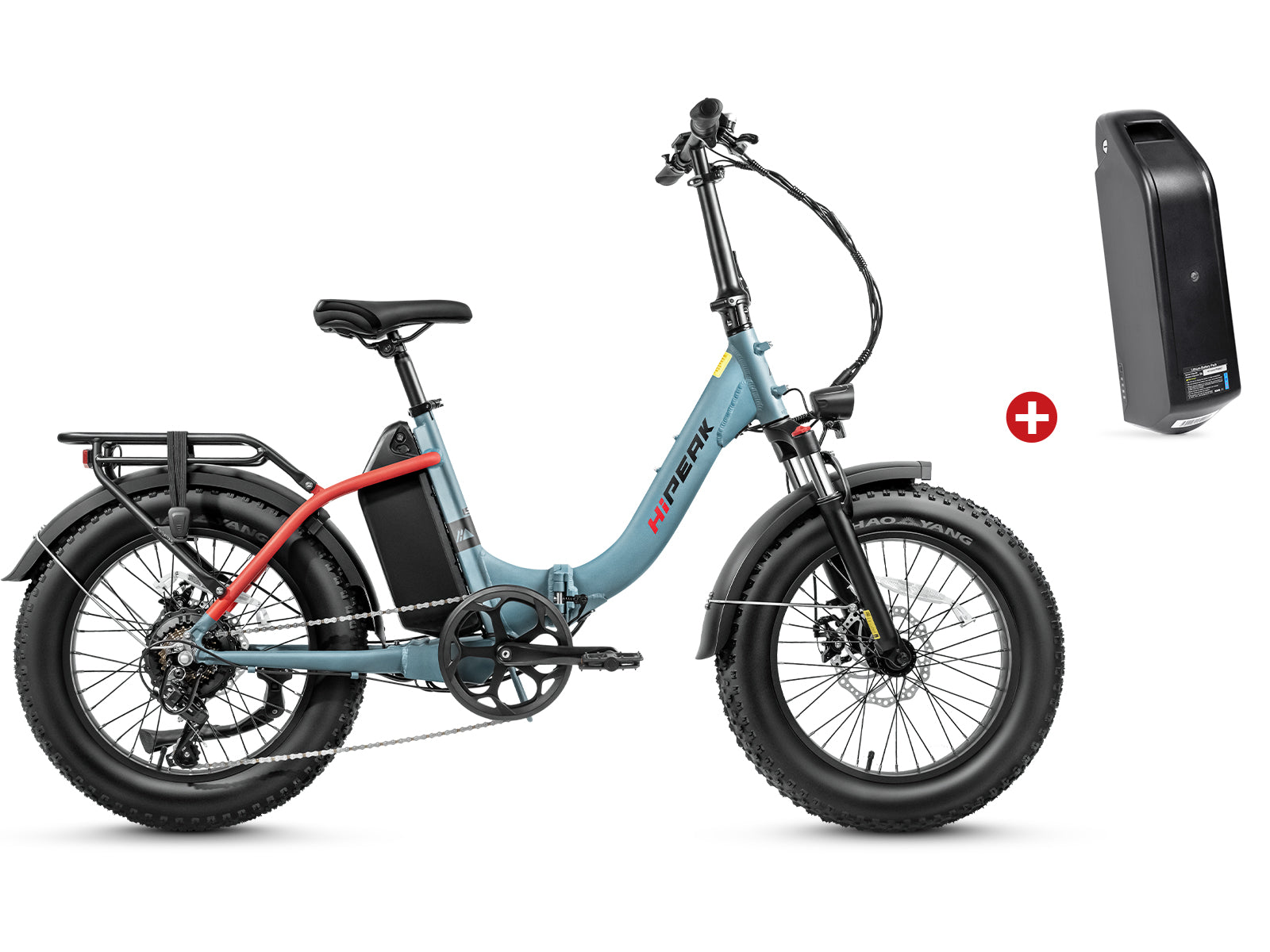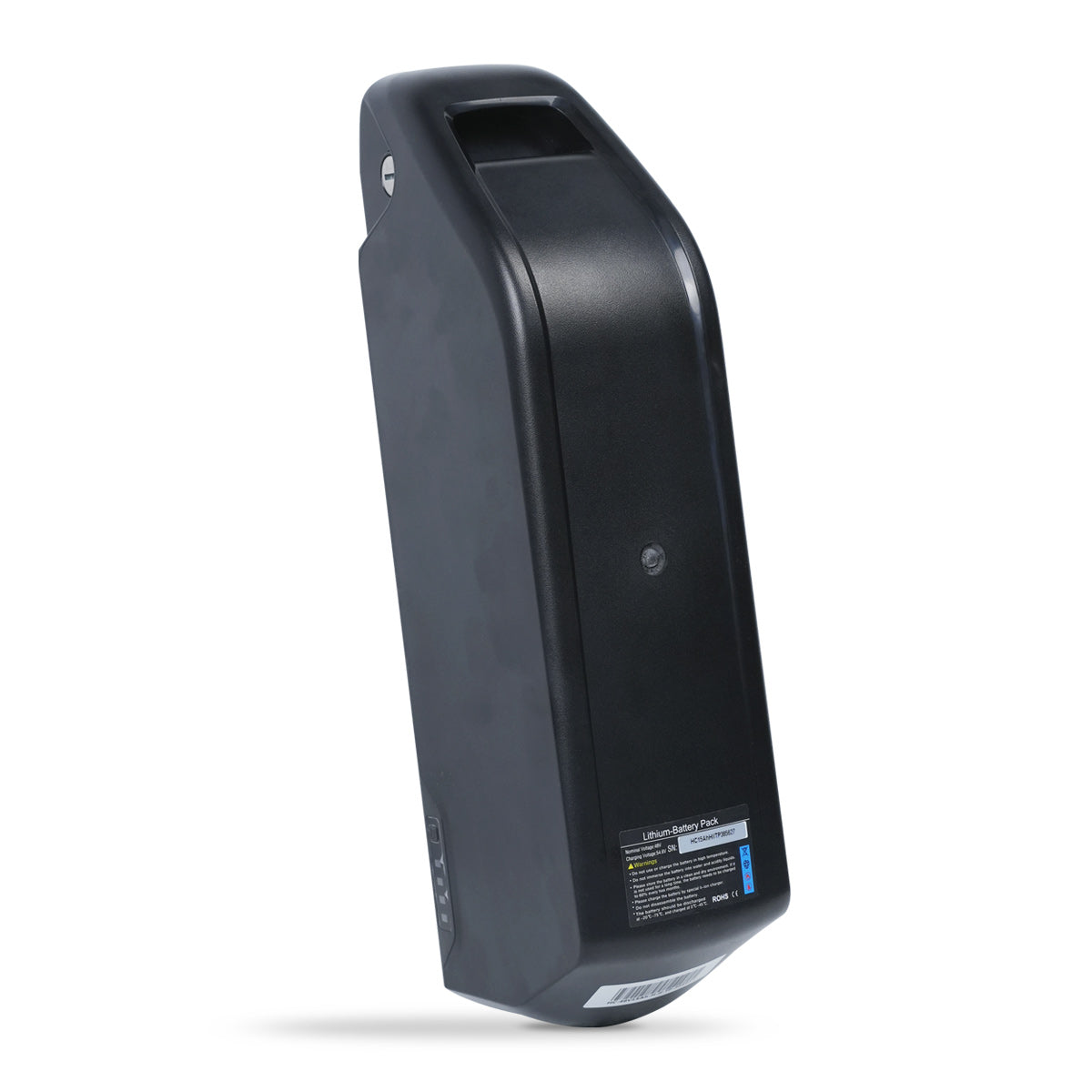Which is Better Mountain E-bike or Fat E-bike?

In order to achieve the highest happiness throughout your travels, that you select an electric bike that is compatible with the way you ride. These bicycles have recently gained popularity as a practical method of transportation because to the availability of a wide range of models that are specifically designed for a variety of environments and applications. You'll be able to make an educated selection and pick the best electric bike for your requirements if you spend some time learning the differences between mountain bikes and fat bikes.
What is a fat tire e-bike?
Four to five-inch wide tires are standard on fat ebikes. Better weight distribution is provided by their bigger tires, especially when cycling on snowy terrain. Their tires increase their stability, resulting in a smoother ride and better traction for you. The greatest option for riding over rocks, trails, mud, and gravel is a fat electric because to the amount of traction and stability.
Pros
Electric bikes with fat tires are very common because they have several benefits. Their ease of handling is one of the key advantages. Fat bikes have outstanding stability and mobility because of their broad tires, which let riders easily pass over a variety of obstacles. Because of the additional stability provided by the low center of gravity, riders may ride down steep hills without worrying about losing control and falling.
In addition, compared to mountain bikes, fat tire bikes are less likely to cause accidents. The rider's weight is dispersed more evenly thanks to the wider tires' higher surface area. When riding on snowy or slick surfaces, this feature comes in handy because it lessens the chance of slipping and falling, hence lowering the danger of injury.
Long journeys are also suitable for fat tire e-bikes. Similar to traditional mountain bikes, the larger tires offer improved grip, enabling riders to comfortably tackle obstacles and go greater distances without always worrying about balance. This makes fat ebikes ideal for long distance travel and off-road excursions.
Furthermore, fat bikes perform well in a variety of weather conditions. They stand out for their ability to travel effortlessly across rough terrain, especially in the winter or bad weather. Compared to regular mountain bikes, the larger tires provide more traction, enabling riders to confidently negotiate difficult terrain. Fat tire bikes are a great option for riders who frequently encounter inclement weather or difficult terrain because to their greater traction and stability.
In conclusion, the benefits of fat tire electric bikes are their simplicity in handling, lower risk of injury, adaptability for extended rides, and capability to function effectively in a variety of weather conditions. Due to these benefits, fat tire bikes are a desirable alternative for riders looking for stability, adaptability, and an exhilarating riding experience.
Cons
Even though fat tire electric bikes have special benefits, it's crucial to think about any potential negatives they may have. A few of these are that they require more maintenance, are more expensive than mountain bikes, and are more difficult to transport because of their size and weight. When choosing the best electric bike for their needs and interests, riders may make an informed choice by taking these things into account.
What is Mountain Bike?
A bike or bicycle specifically designed for riding off-road is a mountain bike. If the path is littered with pebbles and potholes, mountain bikes can also be employed as a mode of transportation. Additionally, they are quick on trails due to their small weight. While they are not as stable as fat bikes, they offer exceptional handling, making them ideal for those who want to pedal easily while moving quickly.
Pros
A popular option for riders, mountain electric bikes have a number of benefits. Their quickness is one important advantage. As a result of the decreased weight and reduced rolling resistance of mountain bike tires, riders can sustain faster average speeds. This benefit is most noticeable when biking on paved roads, where the lighter frame and reduced rolling resistance result in a more rapid pace and more efficiency.
Lightweightness
Mountain bikes are generally lighter because they have thinner rims and tires, which use less construction material. A mountain bike may weigh 5 to 10 pounds less than a comparable fat bike. As a result of the lighter rider equipment, riders have a speedier, more agile ride that makes negotiating hazards and trails easier.
More gears are available
Mountain bikes are capable of having high gear ranges of 30 or more gears with 2x and 3x drivetrains. Riders can successfully navigate a variety of terrains and inclines thanks to their adaptability, which allows them to change their gear ratios to suit the particular riding circumstances. Contrarily, 1x drivetrains with only 12 gears are frequently found on fat tire electric bicycles, which restricts the number of gear selections for users.
Cons
Mountain bikes have a lot of benefits, but there are some drawbacks as well. The fact that mountain bikes have some topographical restrictions is a noteworthy disadvantage. In sand, snow, or extremely muddy conditions, their tires are more likely to sink, which makes pedaling challenging or impossible. Mountain bikes may also have less traction on slippery ground, which raises the possibility of losing control. Mountain bikes may find it difficult to maintain the essential traction and stability on rocky terrain due to their thinner tires.
Furthermore, compared to specialist fat tire bikes, mountain bikes have less traction or grip. Although they still provide respectable off-road traction, they might not offer as much grip as fat tire bikes, particularly in extreme weather. In especially on loose or uneven conditions, the narrower tires of mountain bikes result in a smaller contact area with the ground, which can affect traction and stability.
In conclusion, mountain bikes' drawbacks include their restrictions on certain surfaces like sand, snow, and deep muck, as well as their decreased grip or traction as compared to fat tire bikes. When selecting a mountain bike for certain riding circumstances or tastes, these considerations should be taken into consideration.
A Fat E-bike's and a Mountain Bike's Differences
More than simply tire size separates mountain bikes from fat bikes. Here are some major characteristics that set the two apart:
The main distinction between fat bikes and mountain bikes is the tire width. Mountain bike tires are normally 1.7-2.2 inches (45-56mm) wide, while fat bike tires often range from 4-5 inches (100-127mm). Due to the significant difference in tire width, fat bikes need wider rims to fit their wider tires.
Another distinguishing characteristic is tire pressure. Tire pressures for mountain bikes are normally between 22 and 35 PSI, while pressures for fat bikes can range from 5 to 15 PSI. Due to its bigger ground contact area and lower tire pressure, fat bikes may travel through sand or snow without sinking as deeply.
In order to fit their wider tires, fat bikes need a frame that is larger in size. In comparison to mountain bikes, they have wider forks, seat stays, and chain stays. To provide sufficient clearance and prevent any difficulties when riding, these features are required. Mountain bikes, in comparison, typically have a more conventional frame shape that allows for their thinner tires.
Another obvious distinction between fat bikes and mountain bikes is the size of the hubs. The hub allows the wheel to spin freely and joins the bike frame to the wheel. Mountain bike hubs are smaller because they are made for thinner tires, whereas fat bikes need wider hubs to fit their wider tires.
In conclusion, there are more distinctions between fat bikes and mountain bikes than just the size of the tires. They differ in hub size, tire width, tire pressure, and frame design. When choosing the best bike for their preferred riding style and desired terrain, riders can make an informed decision by being aware of these distinctions.
When buying a fat tire e-bike, what to watch out for?
There are a number of things to consider before making a fat bike purchase. To ensure a larger weight limit and increased longevity, start by prioritizing a strong frame, particularly one constructed of aluminum. Additionally, choose sturdy tires with a width of four to five inches since they give enhanced balance and puncture resistance, especially on sand or icy terrain. When riding challenging, steep trails, a solid suspension system is essential because it maintains stability and responsiveness. Even while rigid forks are common among fat bikes, the huge tires themselves offer cozy cushioning on most surfaces, improving the riding experience in general.
Best Fat Tire Electric Bike Under $2000
Introducing the BONA and ELIAS 48V Step-Over and Step-Thru Fat Tire Folding Electric Bikes, two production models from HiPEAK. These bikes cost $1,299 and come with a 48V 15Ah battery and a strong 750W motor. These e-bike deliver dependable performance with a 60-mile range and a 350-pound weight limit. Both models use 20"x4" fat tires, which improve suspension, comfort, and ease on arduous mountain bike routes or long miles of paved road. They are outfitted with a comfortable saddle for a stable ride, a 7-level pedal assist system for individualized support, mechanical disc brakes for safety, front and rear lights for visibility, and a Shimano 7-speed system for riding in a variety of terrain. They come in yellow, white, and grey-blue colors and have a robust and practical foldable construction that makes transportation simple.
Conclusion
It's critical to comprehend the benefits and drawbacks of both a fat e-bike and a mountain e-bike before making your choice. When deciding between the two, it's critical to take into account elements such as tire width, tire pressure, traction, and frame design. Choosing the best electric bike for a thrilling and pleasurable ride ultimately comes down to knowing these distinctions, taking into account personal tastes, and taking your riding needs into account.





















Leave a comment